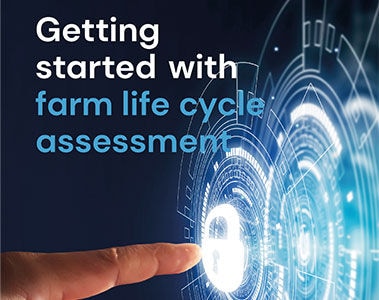
Farmers across the globe are increasingly turning their attention to their carbon footprints particularly due to the demands of the downstream value chain regarding Scope 3 emissions reporting and reduction targets. As the world grapples with climate change, understanding and mitigating greenhouse gas (GHG) emissions from farming systems has become critical. Enter farm carbon calculators: digital tools designed to estimate a farm’s carbon emissions and identify areas for improvement in farm management and farm performance.
Farm carbon calculators are useful in raising awareness of the impact of farming on the environment, in raising visibility on sustainability in food supply chains and in identifying areas where efficiencies can be improved, and where value can be created However, the level of technical advancement of these calculators matters – basic ones offer a simple entry point for basic understanding, while advanced tools or platforms offer many opportunities and value creation.
While basic farm carbon calculators serve as useful entry points into the topic of farm sustainability, they must evolve to address regulatory nuances, embrace a holistic view of sustainability (beyond carbon), and adapt to diverse farming contexts.
Basic carbon calculators tend to demonstrate several shortcomings, such as:
Often, a calculation platform based on full life cycle assessment will overcome many of the shortcomings of a basic farm carbon calculator and provide a great deal more value.
| Basic farm tool | On-farm LCA software | |
| Impact categories | Carbon only | Multiple impact categories, including carbon, water, biodiversity, land use, etc. Typically, all 16 environmental variables. Especially needed for qualification for food eco-labelling initiatives. |
| Emission sources | Primarily direct emissions (Scope 1 & 2), with limited Scope 3 functionality | Direct and indirect (Scope 1, 2, and 3) emissions accounting |
| Data imput | Not farm-specific, mainly secondary or proxy data | Farm-specific primary data supplemented by leading databases |
| System | Simple model with very limited functionality | Advanced, catering to diverse farming practices, crops, animal types and activities |
| Scenario testing capability to model improvements | No | Yes |
| ISO-certified methodology | No | Usually |
| Internationally recognized calculation methodology | No | Yes |
| Accuracy | Low | High |
The most advanced and useful farm life cycle assessment platforms offer the following features:
In conclusion, farm carbon calculators (basic and advanced) play a vital role in promoting sustainable agriculture. Their impact on raising awareness and driving positive change cannot be ignored. As we strive for a greener future, let’s choose our calculators wisely and continue improving our farming practices to reduce carbon emissions and unlock new value streams.
18 April 2024